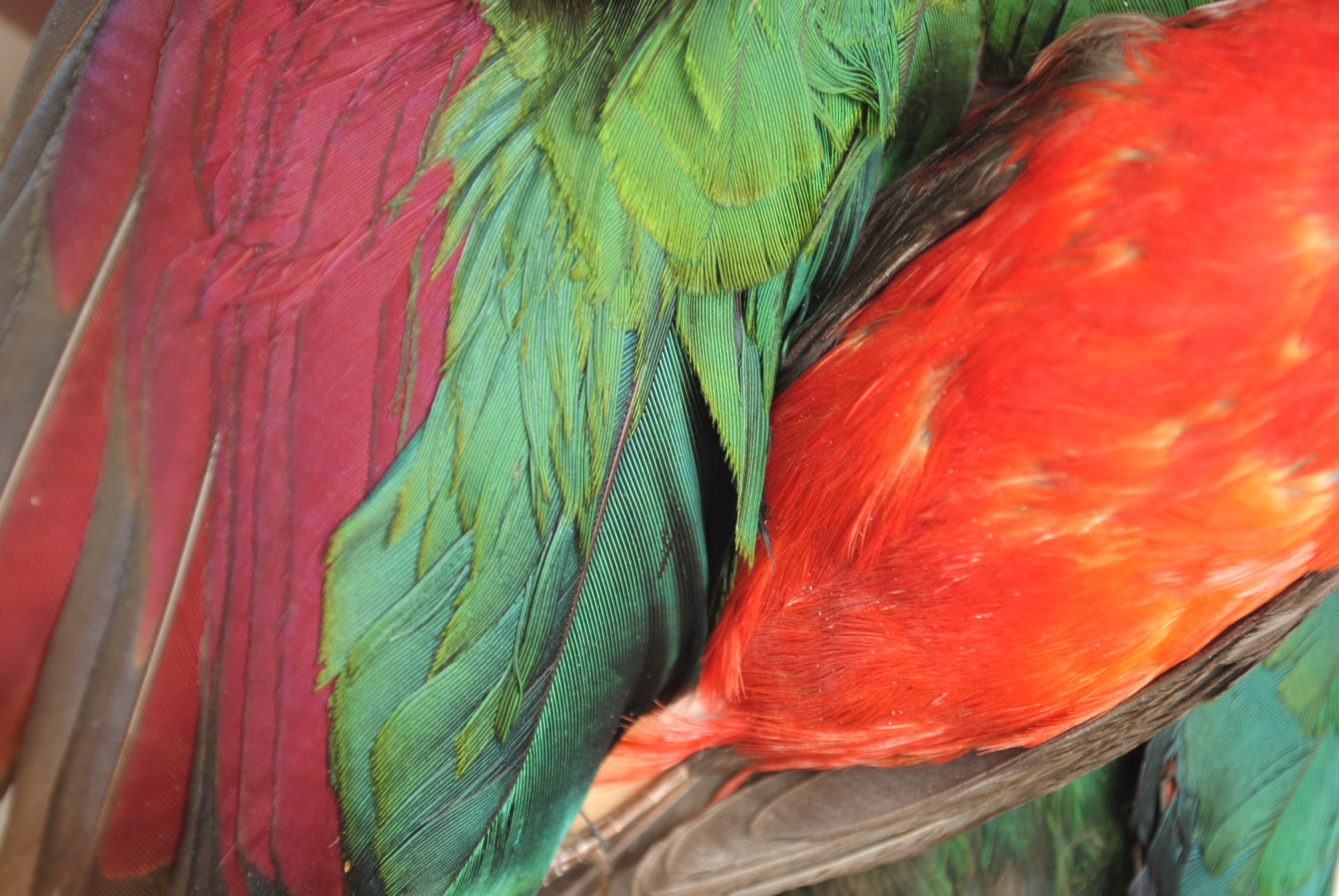Turacin on:
[Wikipedia]
[Google]
[Amazon]
 Turacin is a naturally occurring
Turacin is a naturally occurring Online Medical Dictionary
/ref> Other birds derive their red coloration from carotenoids (bright and orange-reds) or
 Turacin is a naturally occurring
Turacin is a naturally occurring red
Red is the color at the long wavelength end of the visible spectrum of light, next to orange and opposite violet. It has a dominant wavelength of approximately 625–740 nanometres. It is a primary color in the RGB color model and a secondar ...
pigment
A pigment is a colored material that is completely or nearly insoluble in water. In contrast, dyes are typically soluble, at least at some stage in their use. Generally dyes are often organic compounds whereas pigments are often inorganic compou ...
that is 6% copper
Copper is a chemical element with the symbol Cu (from la, cuprum) and atomic number 29. It is a soft, malleable, and ductile metal with very high thermal and electrical conductivity. A freshly exposed surface of pure copper has a pinkis ...
complexed to uroporphyrin III. Arthur Herbert Church
Sir Arthur Herbert Church (June 2, 1834 – May 31, 1915) was a British chemist, expert on pottery, stones and chemistry of paintings, who discovered turacin in 1869 and several minerals, including the only British cerium mineral. He was also a ta ...
discovered turacin in 1869.
It is found only in the bird
Birds are a group of warm-blooded vertebrates constituting the class Aves (), characterised by feathers, toothless beaked jaws, the laying of hard-shelled eggs, a high metabolic rate, a four-chambered heart, and a strong yet lightweig ...
family
Family (from la, familia) is a group of people related either by consanguinity (by recognized birth) or affinity (by marriage or other relationship). The purpose of the family is to maintain the well-being of its members and of society. Idea ...
Musophagidae, the turaco
The turacos make up the bird family Musophagidae ( "banana-eaters"), which includes plantain-eaters and go-away-birds. In southern Africa both turacos and go-away-birds are commonly known as loeries. They are semi-zygodactylous: the fourth ( ...
s./ref> Other birds derive their red coloration from carotenoids (bright and orange-reds) or
phaeomelanin
Melanin (; from el, μέλας, melas, black, dark) is a broad term for a group of natural pigments found in most organisms. Eumelanin is produced through a multistage chemical process known as melanogenesis, where the oxidation of the amino ...
s (rusty and brownish-reds).
It is often assumed that this coloration will wash out when the birds are bathing or after heavy rains, but this is true only if the water used for bathing happens to be very alkaline.
See also
* Psittacofulvin, a brightly colored red and yellow pigment unique toparrot
Parrots, also known as psittacines (), are birds of the roughly 398 species in 92 genera comprising the order Psittaciformes (), found mostly in tropical and subtropical regions. The order is subdivided into three superfamilies: the Psittacoide ...
s
* Turacoverdin, green pigment unique to turacos
References
Biological pigments {{ornithology-stub